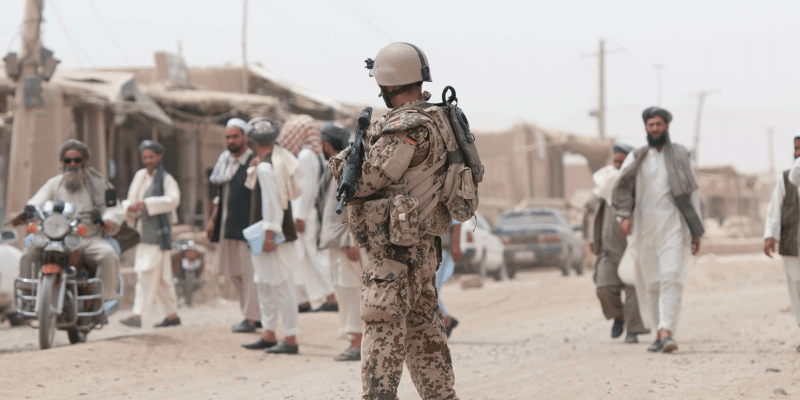Once US troops began pulling out of Afghanistan, it quickly became clear that the Afghan government couldn’t stand on its own. In fairly short order President Ashraf Ghani fled the country and Taliban took control of the government. As I’ve reflected on the events over the past few weeks, I’ve noticed parallels between US efforts to develop Afghanistan and the global development community’s efforts to develop many poor countries. These three lessons have emerged.
First, data never tells the whole story. And in many cases, it gives a false sense of progress. In his book, The Afghanistan Papers: A Secret History of the War, Craig Whitlock notes that, “By some measures, life in Afghanistan has improved markedly since 2001. Infant mortality rates have dropped. The number of children in school has soared. The size of the Afghan economy has nearly quintupled.” In addition, not only has Afghanistan held several elections since the US invasion in 2001–a hallmark of democracy– but Afghanistan also graduated its first class of female officers in 2010, a nod to improvements in gender equality. On the surface, such data looked promising, but unfortunately, as we now see, it provided a false sense of progress.
Similarly, the global development community celebrates a plethora of data which gives a false sense of progress in the fight against poverty. For example, more than one billion people have lifted themselves out of poverty over the past few decades, and many countries are now experiencing a rise in schooling and better health outcomes. The data is accurate, but it’s also incomplete. For instance, regarding poverty, most of the people who have escaped poverty are in China and India. Related to education, although hundreds of millions more children now attend school, most aren’t learning and prospects for continuing education and employment are very limited. And as it relates to healthcare, if wealthy countries decide to stop funding critical healthcare programs in many poor countries, health systems will crumble.
Data is important, and we need data. But data is often mistaken for the phenomena when it only represents the phenomena. As with the case in Afghanistan, although the data looked promising, real progress was scant.
Second, it’s incredibly difficult to push your way to development. For development to be sustained, it must be pulled in by a strong mechanism. In the past two decades, the United States has spent more on “nation-building in Afghanistan than in any country ever, allocating $133 billion for reconstruction, aid programs and the Afghan security forces,” notes Whitlock. In effect, the US government pushed hundreds of billions of dollars into Afghanistan to develop infrastructure, institutions, and to trigger economic development, but much of that amounted to hollow development. Ribbon-cutting ceremonies and overpriced infrastructure projects that the Afghan people couldn’t manage. Whitlock details many of these expenditures in The Afghanistan Papers.
Here again, we see a parallel with the global development industry. Since the 1960s, rich countries have spent trillions of dollars on foreign aid to help poor countries develop. This doesn’t include aid from major philanthropic organizations such as the Gates, Ford, and Rockefeller foundations. But with the exception of a handful of countries, poor countries in the 1960s remain poor today. In this paper, Kate Bridges and Michael Woolcock provide some insight as to why most of these projects flounder. Too many development organizations push their resources and agenda without taking into account the local context. A better way is to understand the context and develop a mechanism that’s strong enough to pull in development.
In our research, we have found that investing in a particular type of innovation called market-creating innovation, is one of the strongest mechanisms to create and sustain development. Market-creating innovations serve as a strong foundation to pull in the infrastructure and institutions to support strong markets in which people can more easily transact with one another. Without it, development will struggle to take root.
Finally, the incumbents are always incentivized to proclaim success, even when things aren’t going well. In internal documents obtained by The Washington Post, there were multiple accounts from senior military officials describing how the US government misled the public about progress in Afghanistan. “Every datapoint was altered to present the best picture possible. Surveys, for instance, were totally unreliable but reinforced that everything we were doing was right and we became a self-licking ice cream cone,” is how Bob Crowley, an Army colonel, put it. The same thing happens in development.
Every year, development organizations publish annual reports that show vastly more successes than failures. Unfortunately, this false sense of progress limits our ability to learn from the failures and mistakes many organizations are making. But many who work in development are incentivized to tell success stories in order to keep the funding flowing. No donor wants to fund failed projects.
The situation in Afghanistan, much like the issue of creating economic development in poor countries, is complex. And although the war was lost, the lessons learned, expensive as they may be, can help us create a better world for the billions of people for whom meeting their basic needs remains a constant struggle. We owe it to them to heed these lessons.



